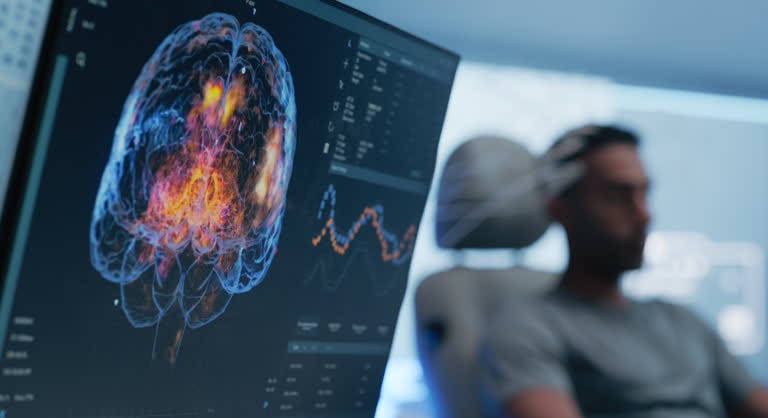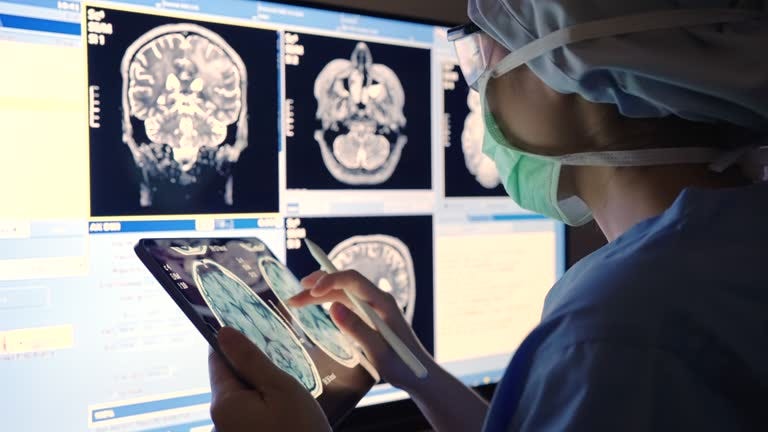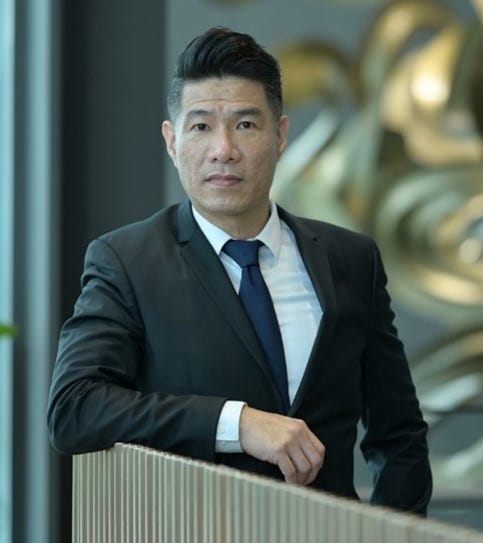Sensory Processing Disorders in a Rehabilitation 4.0 Context
Sensory Processing Disorders (SPD) alter how people register, prioritise, and integrate information across auditory, visual, tactile, vestibular, proprioceptive, and interoceptive systems. The consequence is not abstract—it shows up as stalled learning, disrupted routines, reduced mobility, and social withdrawal. For industry leaders, the brief is to replace fragmented, device-of-the-day solutions with interoperable systems that translate sensory science into participation gains across clinics, classrooms, homes, and public spaces. This paper reframes SPD from a product problem into an operating model challenge, combining clinical practice, assistive technology, and robotics to move organisations from pilots toward reliable, scaled outcomes.
From Symptom Alleviation to Everyday Participation
Heterogeneity is the norm. Over- and under-responsivity, seeking behaviours, and discrimination challenges often co-occur and shift with context. Point fixes—one gadget for one symptom—rarely generalise.
Where value concentrates.
Care delivery efficiency: faster therapeutic “ready state,” fewer cancellations, smoother session transitions, improved adherence to home programmes.
Learning and inclusion: longer time-on-task, fewer behavioural escalations, better group participation, more consistent fine-motor output.
Household stability: shorter morning routines, calmer bedtimes, reduced caregiver stress, fewer crisis escalations.
Solutions that are adjustable, predictable, and measurable deliver the highest return—especially when designed to fade reliance as self-regulatory skills emerge.
Turning Sensory Science into System Design
Treat SPD support as a layered architecture rather than a catalogue.
Layer 1: Sensory-considerate environments. Anti-flicker lighting, acoustic damping, predictable wayfinding, safe cable management, and optional quiet zones reduce baseline load while preserving choice.
Layer 2: Low-/mid-tech tools. Tactile and proprioceptive aids, slow-transition visual focal points, vestibular trainers with wide safety margins, and auditory devices with firm volume ceilings and predictable timing.
Layer 3: Mechatronics and robotics. Instrumented balance platforms, graded haptic actuators, socially assistive robots for routine scaffolding, and tele-rehab kits that carry dosing and measurement into the home.
Layer 4: Analytics and feedback. Lightweight indicators—time-on-task, transition success, sway variability, dosage adherence—mapped to goals that families and educators actually track.
Layer 5: Protocols and people. Tiered pathways, dosing “recipes,” quick-start guides, micro-learning, and simple decision trees that make the next right action obvious.
This stack lets organisations start with what they have, scale across sites, and climb from manual to closed-loop capability without stranding earlier investments.
Principles That Survive Scale
Adjustability over time. Devices should span wide intensity ranges and include timers to define dose windows; data then reveals each user’s calming vs. alerting “sweet spots.”
Predictable, then optional challenge. Reliability reduces anxiety; elective challenge modules sustain engagement without surprise spikes.
Safety engineered in. Hard caps on speed, amplitude, brightness, and sound; watchdogs and lockouts; clear age/weight labels; documented thermal and electrical protections.
Durable and hygienic. Wipe-clean materials, snag-free design, secure battery housings, replaceable covers and consumables, and serviceability to extend asset life.
Human-centred controls. Large buttons, redundant cues (visual/auditory), tactile feedback, pictorial quick-starts—because staff turnover is the rule, not the exception.
Interoperability with data minimisation. Open summary exports, local processing by default, opt-in cloud only with informed consent.
Clinical Operations
Assessment to action. Set functional targets first (e.g., “dress independently with minimal distress”), baseline the few indicators that matter, and centre family/teacher priorities.
Tiered pathways.
Universal: environmental adjustments and widely available calming/focusing tools.
Targeted: short, scheduled proprioceptive or visual focus routines before known stress points; delivered to small groups.
Intensive: personalised, sensor-informed protocols using instrumented devices or robotics with close monitoring and planned progression.
Dosing logic. Start low, progress slow. Interleave calming and alerting inputs to match the day’s demands. Plan to fade prompts to avoid dependence.
Measurement cadence. Track a small set of meaningful indicators weekly; add instrumentation (e.g., postural sway) only when it changes decisions. Visualise progress for the child to strengthen agency.
Precision Where It Matters, Not Performance for Show
Robotics earns its place by delivering repeatable stimuli, objective measurement, and adaptive control without adding sensory burden.
High-yield use cases.
Vestibular-proprioceptive dosing: instrumented platforms that deliver capped oscillations while quantifying sway and postural strategy.
Haptic coaching: wearable or handheld actuators providing graded vibration/pressure for body awareness and force control.
Sequencing and attention: socially assistive robots that present predictable steps with low-jerk motion and adjustable sound/light envelopes.
Home carryover: simple actuators and sensors under remote oversight; caregivers receive weekly, plain-language summaries.
HRI parameters for SPD. Smooth acceleration/deceleration, slow light fades, low default brightness, capped volume with soft-mute, predictable distancing to avoid looming.
Closed-loop adaptation. Downshift intensity on signs of dysregulation, escalate only with tolerance, and allow clinicians to lock plans to preserve protocol integrity.
How Scale Actually Happens
Standardise starter kits for each setting—clinic, classroom, home—with three or four elements and laminated dosing cards.
Train for consistency using micro-modules (<10 minutes), QR-linked videos, and peer champions who troubleshoot in context.
Instrument sparingly around the outcomes that matter, publish simple internal dashboards, and adjust protocols in brief huddles.
Finance for reliability via Device-as-a-Service bundles covering training, maintenance, loaners, and refresh cycles to prevent downtime.
Introduce robotics selectively where dosing precision or measurement fills a true gap; resist technology creep that adds complexity without outcome lift.
Aligning Incentives With Outcomes
Who benefits and how.
Families: steadier routines, fewer crises, improved sleep, lower stress.
Educators: more instructional minutes, fewer disruptions, greater inclusion.
Providers: faster time to therapeutic readiness, better adherence to home programmes, higher satisfaction.
Payers: fewer urgent escalations, better utilisation of therapy minutes, potential avoidance of higher-intensity interventions.
Commercial pathways.
Capital purchases paired with service contracts and clear three- to five-year TCO.
Subscriptions that wrap equipment, protocols, training, and refresh.
Direct-to-family modular kits with instalments and optional tele-coaching.
Outcome-aware agreements where feasible, linked to participation metrics agreed upfront.
Evidence that travels. Pragmatic, practice-embedded studies with simple endpoints; de-identified benchmarking so buyers can evaluate fit without compromising privacy.
Trust at the Core
Right-sized regulatory posture. Match claims and testing to intended use. Avoid medical claims unless evidence and classification warrant them. For consumer-grade tools used clinically, strengthen labelling and instructions for use.
Engineering controls. Stability and ingress testing, thermal and electrical protections, robust firmware with safe defaults and secure updates.
Clear instructions. Age/weight limits, supervision guidance, contraindications, maintenance schedules, and end-of-life recycling to support sustainability commitments.
Data stewardship. Collect only what changes care; default to on-device processing; require explicit consent for cloud connectivity; provide families with data access and deletion options.
Turning Variability Into Capability
Competency ladder.
Core: sensory principles, observation, and de-escalation.
Device-specific: setup, parameter control, safety checks.
Data literacy: reading simple dashboards and knowing when to adjust intensity, frequency, or sequence.
Training that sticks. Micro-learning linked by QR codes on devices, brief role-plays for managing dysregulation, and five-minute refreshers in staff meetings.
Practice reliability. SOPs for common scenarios (morning transition, pre-procedure calming), quick debriefs to capture what worked, and peer champions who keep momentum between formal trainings.
Build for Longevity, Not Lock-In
Modular hardware ecosystems. Start with robust low-tech cores; add sensors and actuators via standard connectors as needs evolve.
Closed-loop session “recipes.” Pre-configured blocks—calm, alert, focus—with adjustable durations and intensity ranges; automatic downshift on dysregulation cues.
Design to reduce stigma. Neutral aesthetics for home and classroom settings; avoid medicalised appearance that inhibits everyday use.
Interoperability without surveillance. Export concise summaries (e.g., “sway variability decreased by X%”) and keep raw signals local unless families opt-in.
Affordability by design. Common materials, repairability, and accessible consumable supply chains; avoid proprietary parts where they add cost without functional gain.
Converting Science Into Daily Routines
Auditory. Begin with soft, predictable tones mapped one-to-one to actions, then extend to longer sequences or modest tempo increases. Cap volume and pair sound with visual progress cues.
Visual. Use slow fades and predictable motion; include passive calming and optional interactive modes; ensure tip resistance and safe routing of power cables.
Tactile and proprioceptive. Provide a spectrum of textures and intensities with simple timers to prevent overdosing; ensure washable covers and secure battery housings.
Vestibular. Start with stable bases and progress to compliant surfaces or slight tilts; add foot-placement cues and slow accelerations for any powered elements; supervise novices and document tolerance.
Risk Management and Continuous Improvement
Common pitfalls. Overstimulation, physical safety incidents, and learned dependence if devices displace skill development.
Mitigations that work. Conservative defaults, explicit supervision policies, pre-session safety checks, and deliberate fading of supports as competence grows. Review usage and outcomes monthly; adjust protocols and rotate devices to avoid over-reliance.
Portability Across Settings
Primary classroom. A five-minute proprioceptive sequence followed by two minutes of visual focus cuts prompts and increases instructional time; peer interactions improve as starts become calmer.
Outpatient clinic. A vestibular warm-up on a stable surface plus gentle tactile input transitions a dysregulated child into task mode quickly; session productivity rises without extending appointments.
Home routine. A compact, timed proprioceptive activity and a visual cue card convert dressing from conflict to habit—shorter duration, lower distress.
Robotics adjunct. An instrumented platform delivering low-amplitude oscillations with real-time feedback builds postural tolerance over weeks, improving playground confidence alongside measurable sway reductions.
From Point Devices to Participatory Systems
The sector will continue to deliver inconsistent results until SPD is handled as a system problem: environments, tools, robotics, analytics, and protocols working together. The approach outlined here—stacked architecture, platform-grade design doctrines, tiered clinical pathways, selective use of robotics, and outcome-aligned economics—offers a pragmatic route to scale without sacrificing dignity or privacy.
When solutions are predictable and adjustable, people gain agency rather than dependence. When environments adapt, inclusion becomes practical. And when organisations insist on interoperable, outcome-based ecosystems, SPD support moves from boutique pilots to everyday access—quietly transforming clinics, classrooms, homes, and communities into places where sensory differences are accommodated with respect and where participation is the norm rather than the exception.
Stay informed of these developments via my LinkedIn updates at https://www.linkedin.com/in/zenkoh/ and subscribe to my newsletter at
Legal Disclaimer
This article is intended for informational purposes only and does not constitute professional advice. The content is based on publicly available information and should not be used as a basis for investment, business or strategic decisions. Readers are encouraged to conduct their own research and consult professionals before taking action. The author and publisher disclaim any liability for actions taken based on this content.







